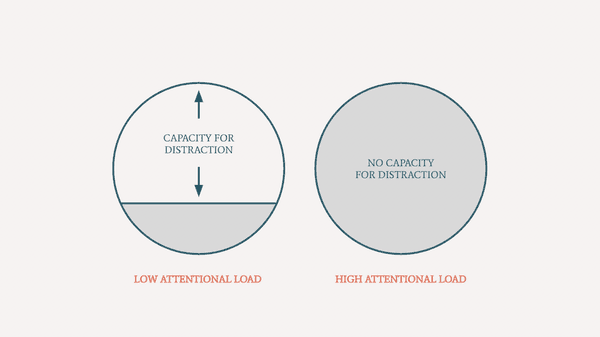Explore the World's Best Ideas
Join today and uncover 100+ curated journeys from 50+ topics. Unlock access to our mobile app with extensive features.
Curiosity And Focus
Keeping a focused mind is hard. Imagine you’re working on an important report due tomorrow. As you start writing, your phone lights up with a text from a friend. Your natural curiosity makes you wonder what the message says.
While curiosity and focus may seem like opposing drives, they’re actually deeply intertwined. By understanding the neuroscience of attention you can learn to intentionally direct and sustain your curiosity to achieve your ambitions.
5
38 reads
To understand intentional curiosity, we first need to understand the concept of the attentional field. Your attentional field is the combination of everything inside you—thoughts, emotions, physical sensations—and everything outside you, including what you see and hear. It encompasses all the information competing for your brain’s limited attentional resources.
5
24 reads
When you’re working on something and receive a notification, two parts of the brain are involved in managing your attention within this field. The prefrontal cortex, directly behind the forehead, is activated when you start concentrating. The parietal cortex, behind the ear, is activated by distracting events.
6
24 reads
Research shows these two regions process information differently. The prefrontal cortex emits slower frequency pulses of electricity, which are associated with focused attention and goal-directed behavior. In contrast, the parietal cortex emits faster frequency pulses, enabling quick responses to unexpected stimuli and automatic processing of information.
5
23 reads
Navigating your attentional field can be challenging, with countless stimuli competing for your limited cognitive resources. Distractions, both internal and external, can easily pull your focus away from the tasks that matter most. However, by cultivating intentional curiosity, you can effectively manage these distractions and strengthen your ability to focus.
5
18 reads
1. Remove obvious distractions. Put your phone away. And by away, I mean in another room. If you work in an open space, put your headphones on to dissuade people from talking to you. And if you’re tempted to check social media on your laptop, install an app that will prevent you from accessing them for a set amount of time.
5
15 reads
2. Increase your attentional load. The Load Theory of Attention posits that because attention is a limited resource, filling all the additional “slots” in your mind may leave no room for other distractions. This is why some people work better when having a bit of background noise or listening to music while in focused mode. Experiment with adding deliberate distractors so your curiosity doesn’t get derailed.
6
17 reads
5
38 reads
3. Monitor your mind. However intentional you are, you will get interrupted by internal or external distractions at one point or another. When faced with a distraction, be curious about why it’s pulling your attention. Is it truly important, or just a fleeting impulse? By evaluating the nature of the distraction, you can more easily redirect your curiosity back to your main task, or identify curiosity attractors you might want to explore further at a later point.
5
16 reads
4. Make space for mind wandering. While studies suggest that letting your mind wander too often can have a negative impact on overall performance in your daily life, scientists havefound that closing your laptop and daydreaming for a few minutes has a positive impact on cognition. You can even take some notes afterwards to record any interesting thoughts.
5
18 reads
5. Strengthen your curiosity. Make it a habit to be curious about everything in your life—your inner landscape, external events, new interests, and the people around you. By drawing connections between all these areas of your life, you’ll notice that what may seem like a distraction on the surface can be the seed of a project.
5
12 reads
IDEAS CURATED BY
Other curated ideas on this topic:
4 ideas
5 ideas
Why Silence Is So Good For Your Brain
huffpost.com
3 ideas
Daydream believer: why your brain is wired to wander
theconversation.com
Read & Learn
20x Faster
without
deepstash
with
deepstash
with
deepstash
Personalized microlearning
—
100+ Learning Journeys
—
Access to 200,000+ ideas
—
Access to the mobile app
—
Unlimited idea saving
—
—
Unlimited history
—
—
Unlimited listening to ideas
—
—
Downloading & offline access
—
—
Supercharge your mind with one idea per day
Enter your email and spend 1 minute every day to learn something new.
I agree to receive email updates

